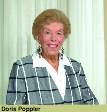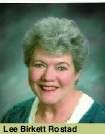Around The Oval
OVER THE TOP

When Larry Krystkowiak, 6’9”, was named head basketball coach at UM last spring, he quickly tapped Wayne Tinkle, 6’10”, as an assistant coach. In so doing, he created the tallest coaching staff in the league, perhaps the West, and reunited a duo that played together as Griz in the 1980s.
“Krysko” happens to be UM’s all-time leading scorer and rebounder and was assistant Griz coach under Blaine Taylor. He also played ten years with the NBA, mostly as a Chicago Bull. His last job was head coach of the Idaho Stampede of the Continental Basketball Association. The Stampede lost a squeaker to the Dakota Wizards for the league’s title last year.
Tinkle was assistant coach first to Don Holst and then to Pat Kennedy, who left UM after two losing seasons to coach at Towson University in Maryland. Before that Tinkle played in the European basketball leagues.
Montanan staff knows full well that tall basketball players are desirable. But tall coaches ... ? We sat down recently to mull over the possible advantages and came up with this top-ten list.
Why It’s Good to be a Tall Coach
You can share workout sweats with each other.*
You’re more likely to survive Missoula’s air inversions.
Your players will always look up to you.
Missoula’s big and tall shop may want to become a sponsor for your program.*
You get better cell phone reception.*
You don’t need a ladder to cut down a championship net.*
Refs can’t get in your face.
No one can see your bald spot.
Nobody makes fun of your name, even if it is Tinkle.
Number One: You can reset UM’s Main Hall clock.*
*indicates a savings for the athletic department and/or UM
A RECORD BREAKER
UM’s Biggest ‘Suit’

Occasionally, George Dennison’s been spotted without a necktie: jogging down Higgins Avenue at a seven-mile-an-hour clip in the pre-dawn light, wearing sweats and a watch cap; or in khaki shorts and a yellow golf shirt, driving the green on a par three. But most of Dennison’s waking hours are spent in a dark suit and spit-polished dress shoes as he single-mindedly immerses himself in the job of UM president—a position he’s held longer than any other leader in UM’s 111-year history.
“It’s necessary,” Dennison says, of the public persona he inhabits nearly twenty-four hours each day. And George Dennison ’62, M.A. ’63, does what’s necessary. Fit, trim, lightly tanned, and looking younger than his sixty-nine years, he relaxes in his office while discussing the hurdles facing him when he assumed UM’s presidency in 1990.
“I expected challenges in two areas: development of academic programs and development of research. The last thing I expected was having to deal with the infrastructure.”
But deal with it he did. Under Dennison’s leadership, the University launched an extraordinary building boom. With low national interest rates, timely bond issues, individual donations, and monies from the largest and most successful fundraising campaign in UM history, Dennison built the Davidson Honors College, Pantzer Hall, the parking garage, and new family and student housing. He realigned Campus Drive, expanded Washington-Grizzly Stadium, and renovated the pharmacy, Student Health Services, chemistry, and media arts buildings, among a few dozen other projects.
“All the buildings have come as a result of need,” Dennison says. “They all relate to what the students and faculty can accomplish.”
Dennison, an unwavering and outspoken champion of diversity on campus, has made increased enrollment of minority students another of his priorities. “It comes out of what I learned growing up,” he explains. In Dennison’s Kalispell high school, “Native Americans weren’t part of things.” Dennison saw the same situation with black citizens during his travels in the military. “I understood we had to do something about this,” he says. “Civil rights is important. Affirmative action is important because it’s the right thing to do.” International student enrollment has also swelled under Dennison’s leadership. “The interaction among students makes them all better citizens.”
Volunteerism is another of Dennison’s causes, not only for the services that students perform, but because, in the process, they’re molded into better citizens. “It’s the civic engagement that comes as a result,” he says.
During President Dennison’s tenure, research funding has increased nearly tenfold. “It’s because of the faculty,” he says. “When I got here, I challenged them to double it, which they did in record time. I keep raising the bar and they keep beating it.”
George Dennison defies labels: he’s a scholar who loves sports, an aesthete with a yen for glazed doughnuts; he’s confident yet shy, impatient but enormously kind. His intense, vaguely discomfiting gaze will morph like quicksilver into crinkle-eyed merriment when someone taps into his whimsical vein. “I love a good joke,” Dennison says. “I like wit.” A theater buff, he’s seen Cats and Les Miserables each several times. He sleeps little, drinks coffee by the quart, and indulges in only one meal per day. “It works for me, he says. “I don’t want to be wasting time eating.”
A voracious reader, Dennison relaxes with John Grisham and Michael Crichton novels when not plowing through historical and educational books by the dozen. “You have to—in a job like this,” he says.
On April 25, 2004, President Dennison out-distanced the tenure of Charles Clapp, UM’s president from 1921 to 1935. A smile softens Dennison’s face as he contemplates the significance of his accomplishment. “It means that I adhere to positions I took,” he says, “that presidents ought not move around. They ought to stay and solve the problems they create.”
“Running the University is a huge honor,” President Dennison says, “and a huge responsibility. You have to always be making sure you’re doing the right thing. You’re never ‘there’—wherever ‘there’ is.” — Paddy MacDonald
YOU, YES, YOU!
Prestigious, world-opening scholarships aren’t limited to currently enrolled students. The Institute of National Education, in cooperation with the U.S. Department of State and the J. William Fulbright Foreign Scholarship Board, has announced the 2005-2006 Fulbright U.S. Student Program competition.
For more than fifty-seven years, the program has provided future American leaders with an opportunity to study, conduct research, and teach in other nations. Applications from young professionals interested in an international experience are also encouraged. See if there may be a Fulbright in your future by contacting Paula Fisher at (406) 243-2401 or visiting www.iie.org/fulbright. The application deadline is October 21, 2004.
PROF. JUSTMAN NETS PEN AWARD
 UM Professor Stewart Justman won the 2004 Pen Award for the Art of the Essay for his book, Seeds of Mortality: The Public and Private Worlds of Cancer.
UM Professor Stewart Justman won the 2004 Pen Award for the Art of the Essay for his book, Seeds of Mortality: The Public and Private Worlds of Cancer.
One of the writing world’s highest honors, the award is presented each year to the best collection of essays by an American writer in recognition of “the dignity and esteem the essay form imparts to literature, the visual arts, and philosophy,” and is considered on par with a National Book Award.
A review of Seeds of Mortality by the New England Journal of Medicine noted, “Justman cleverly interweaves his own experience as a patient with cancer with reflections on works of literature, the visual arts, and philosophy to create an insightful commentary on how cancer is viewed by American society.”
“The award is especially significant to me as it was conferred by writers themselves—members of the craft,” says Justman, a liberal studies faculty member who has taught introductory English composition at UM for three decades.
Three Women Tapped as DAAs
 Three Montana women—Diane Barz, Doris Poppler, and Lee Rostad—will receive UM Alumni Association’s Distinguished Alumni Awards at Homecoming ceremonies October 8.
Three Montana women—Diane Barz, Doris Poppler, and Lee Rostad—will receive UM Alumni Association’s Distinguished Alumni Awards at Homecoming ceremonies October 8.
Diane G. MacDonald Barz, J.D. ’68, and Doris Swords Poppler, J.D. ’48, have been leading women in Montana’s legal system.
Barz was the first woman and the youngest person elected as a Montana State District Court Judge; she was reelected to this position four times and was the first woman appointed to the Montana Supreme Court. While on the bench, Barz focused on the treatment of children in the criminal justice system. She served as Youth Court Judge in Billings for fifteen years and helped establish the Youth Court Conference Committee. From 1991 to 1994 Barz was an

Assistant U.S. Attorney and from 1995 to 2003 she served as chair of the Montana Judicial Nomination Commission. Barz has been active in Big Brothers and Sisters, the Tumbleweed Advisory Board, the Junior League of Billings, and the UM School of Law Board of Visitors. She and her husband, Daniel, reside in Polson and have one son, Rocky.
Poppler has opened doors for Montana women within the legal profession. After a twenty-two year leave from practicing law-while she raised her six children and cared for her husband, Louis, Poppler joined Barz to form the first all-woman law firm in Montana. In 1990 President George H.W. Bush appointed her as U.S. Attorney for the District of Montana, the first Montana woman to receive this honor. She was a senior field representative for the National Indian Gaming Commission and continues today as a consultant. Active on the Billings City Council and the Tri-County Guardianship, Poppler has served on the Montana Human Rights Commission and the Billings School Board. The first female to receive the UM Law School’s Distinguished Alumnus Award, Poppler recently received a Lifetime Achievement Award from the Barristers.

Lee Birkett Rostad ’51, has dedicated herself to preserving the vanishing parts of Montana’s small-town cultures. A Fulbright scholar to London following graduation, Rostad has served on the Montana Committee for the Humanities, the Charles M. Bair Family Trust Board, and the Montana Historical Society. A former teacher, Rostad is an author, historian, art advocate, potter, and painter. She writes a weekly column in the Meagher County News. Her latest book, Grace Stone Coates—Her Life in Letters, was published in July. In 1994 Rostad received an Honorary Doctor of Letters from Rocky Mountain College and in 2001 she received the Governor’s Award in Humanities. She and her husband, Phil ’51, continue to operate the family ranch near Martinsdale. Their sons, Phil ’76 and Carl ’77, are UM graduates.
Mapping Montana
 They’re here! Map aficionados, as well as the cartographically challenged, will enjoy the new series, “Historical Maps of Montana—Educator’s Edition,” now available at UM’s bookstore.
They’re here! Map aficionados, as well as the cartographically challenged, will enjoy the new series, “Historical Maps of Montana—Educator’s Edition,” now available at UM’s bookstore.
“They are intended to help school teachers bring history to life, but they are really user-friendly for people who just want to know more about Montana and the place they live in,” says Kim Lugthart, who helped compile the maps for UM’s Lifelong Learning project.
The reproductions include seventeen maps spanning the years 1778 to 1898. The maps, printed on heavy archival paper, are unbound—to encourage people to study the materials. They show how our fledgling country began to expand westward, the transformation from tribal territories to full statehood, and how Montana’s future was impacted by the fur trade, treaties, the Oregon Trail, Indian wars, mining, and railroads.
Gifts for Pharmacy, Business Schools
 What do semiconductors and avocados have in common? Both have had the unwavering attention of a man named Jack Poe. Poe parlayed a successful career as a CEO of an electronics company to an early retirement on an avocado farm near the Pacific. Recently he made a $2.5 million gift and commitment to two UM schools.
What do semiconductors and avocados have in common? Both have had the unwavering attention of a man named Jack Poe. Poe parlayed a successful career as a CEO of an electronics company to an early retirement on an avocado farm near the Pacific. Recently he made a $2.5 million gift and commitment to two UM schools.
Like business students everywhere, Poe ’73, MBA ’74, heard UM professors say “go to big companies to make your mistakes and small companies to make money.” So after he graduated, Poe worked at Fairchild Camera and Instrument for ten years to cut his business teeth. In 1985, after five years abroad and five more years in the Silicon Valley, he accepted a position with a small Southern California semiconductor company, Semtech. As Semtech’s CEO, Poe transformed the $10-million company into one now valued at $2.2 billion and a leading supplier of analog and mixed-signal semiconductor devices.
Poe and his wife, Charlotte, have asked that their gifts support the schools of Business Administration and Pharmacy and Allied Health Sciences. Poe chose business because that’s where he earned his degrees and worked as a teaching assistant under the legendary accounting professor, Jack Kempner, and pharmacy because his grandfather was a pharmacist and his father and brother both graduated from UM’s pharmacy school.
The pharmacy gift—the largest the program has received—supports a scholarship in Poe’s family name and the biomedical research addition to the Skaggs Building. The portion benefiting the School of Business Administration provides a scholarship, faculty fellowship, opportunity fund, and the Poe Family Professorship in Entrepreneurship. The son of a small-town business owner, Poe’s vision is that the occupant of the professorship becomes a leader in supporting Montana’s small business infrastructure and nurturing business opportunities for young people in the state.
His years at Semtech were rewarding for Poe and he’s proud of the company’s growth and accomplishments. For the decade from 1992 through 2002, Semtech’s stock was the leading gainer on Nasdaq, increasing more than 12,000 percent; but the long hours, hard work, and post-9/11 travel were exhausting. In 2003, Poe stepped away from the CEO position at Semtech to devote more time to growing citrus and avocados on the family’s small ranch in Somis, California. He remains chairman of Semtech’s board.
Poe worked on farms in Sheridan County near his hometown of Medicine Lake when he was young, so a retirement to agriculture was a natural progression. Not everyone can retire at fifty, Charlotte Poe notes, but it has been a great stress reliever for her husband. “What retirement?” Poe says of his ten-hour-plus days on the ranch. “I spend as much time there as I did at the office, but it’s different and it’s refreshing to keep my schedule my own.” —Kathie Nygaard
Udall Scholars
Three UM students—Lauren Caldwell, Dawson Dunning, and Sierra Howlett— were among eighty students in the United States selected as 2004 Udall scholars. Caldwell, from Fort Wayne, Indiana, and Dunning, from Otter, are both juniors in biology; Howlett, from Arlee, is a junior in Native American Studies and sociology.
The $5,000 scholarships are awarded annually to juniors and seniors studying in fields related to health care or tribal policy. They were named for Morris K. Udall, who represented Arizona in the U.S. House of Representatives for thirty years.
The Udalls are the second major scholarships received recently by both Caldwell and Dunning. Caldwell earned a Truman Scholarship, worth $26,000 for undergraduate and graduate studies. Dunning earned a $7,500 Goldwater Scholarship.
Don Read Named Athletic director
 One of UM’s favorite people and its most successful football coach, Don Read, returned to the University in May, assuming the responsibilities of athletic director following a low point for UM athletics.
One of UM’s favorite people and its most successful football coach, Don Read, returned to the University in May, assuming the responsibilities of athletic director following a low point for UM athletics.
A nearly $1 million deficit in the athletics budget, reported in February, resulted in the resignation of former Athletic Director Wayne Hogan. The Commissioner of Higher Education Sheila Stearns named a panel to investigate the shortfall. After a three-month study, the panel attributed the shortfall to accounting errors and a failure to maintain fiscal discipline in the department.
In May the Board of Regents accepted the panel’s report and approved President George Dennison’s plan to eliminate the deficit and prevent any reoccurrences of shortfalls by: controlling expenditures; and increasing ticket prices, concessions, royalties, student fees, and institutional funds. The additional fee revenue and other funds will go to prevent any future deficit, Dennison says.
Dennison tapped Read, who had retired and was living in Oregon, to lead the athletic department. “My heart has always been in Montana,” Read says. “This is a wonderful opportunity for me. I did a lot of things and really enjoyed my retirement. But I really need something to focus on, and what is better than to come back and be part of a great University and a tremendous athletic program?”
Read coached the Griz from 1986 to 1995, amassing a career record of 85-36 and capping his career with UM’s first I-AA championship in 1995. Along the way, he made many friends and influenced a lot of people.